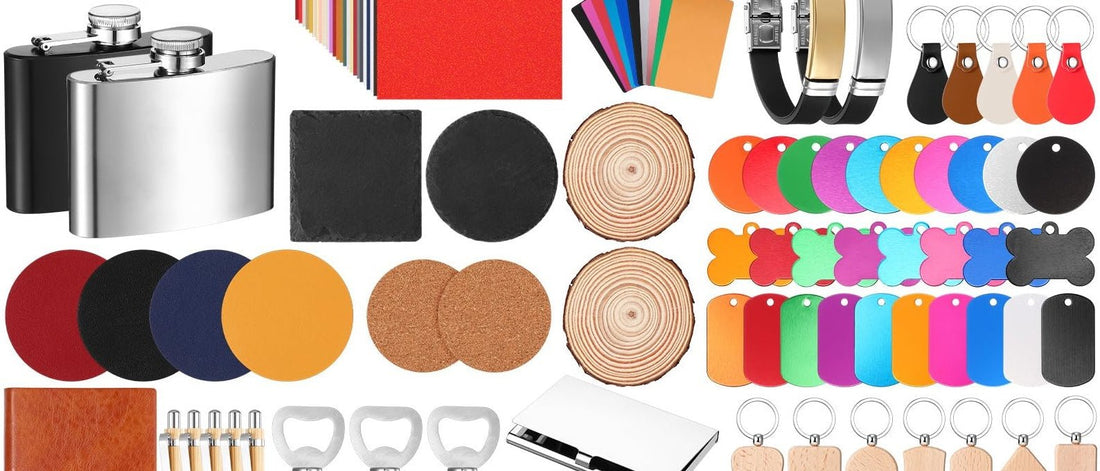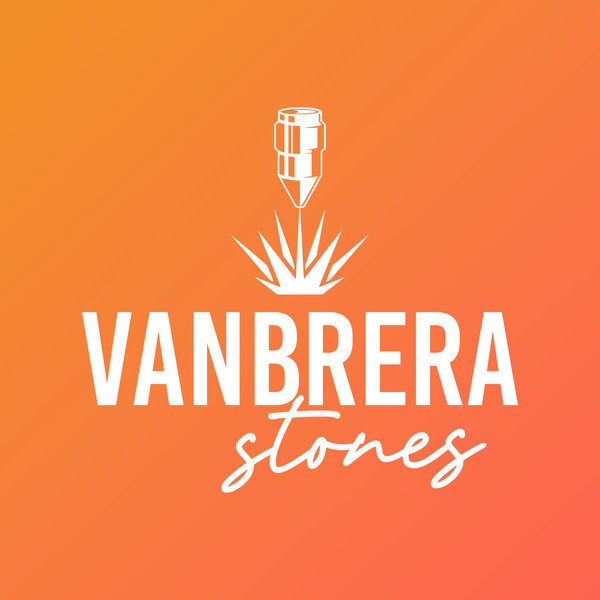
The Top Material for Laser Engraving: A Comprehensive Guide
The Top Material for Laser Engraving: A Comprehensive Guide
So you’ve got a laser and a dream. Now comes the million-dollar (okay, sometimes $19.99) question: what’s the best material to engrave? Short answer: it depends on your laser type, your look, and your margins. Long answer: pull up a chair, Carlos—let’s dial in the winners, the “meh,” and the money-makers.
The 3 Big Variables (aka Why “It Depends”)
-
Laser Type:
-
Fiber (20–50W+): Metals & some plastics. Incredible marking detail, permanent, fast.
-
CO₂ (40–150W+): Organics (wood, leather, paper), acrylic, glass/stone (with techniques). Great for cutting.
-
UV (3–10W+): Delicate plastics, glass, ceramics. Ultra-fine, low heat, super crisp.
-
Diode (5–40W modules): Entry-level; excels at dark organics, coated metals with the right prep.
-
-
Desired Result: High contrast? Deep engrave? Paint-fill? Color marking on stainless (MOPA)? Your goal dictates the material.
-
Profit & Production: Cost per blank, cycle time (mins per piece), fail rate, finishing steps, packaging. The “top” material is the one that stays sold-out without burning you out.
TL;DR Cheat Sheet
| Goal | Best Bet | Laser Type |
|---|---|---|
| Fast, permanent, premium marking | Anodized aluminum tags/plates | Fiber, Diode (mark), CO₂ (with pre-coats) |
| Bold black/white, gift-friendly | Slate coasters | Fiber (marks), CO₂ (engraves), Diode |
| Luxe, heirloom vibe | Natural stone (granite, marble, river rock) | Fiber (contrast mark), CO₂ (surface), UV (fine mark) |
| Crisp letters, easy sell | Powder-coated stainless tumblers | Fiber (direct), CO₂ (with Cermark/thermark) |
| Cut + engrave signage | Cast acrylic (black/white/clear) | CO₂ (king), Diode (some) |
| Wallet-friendly customization | Birch/Maple hardwoods | CO₂, Diode |
| High-detail on tricky plastics | ABS/PC/HDPE variants | UV (clean), Fiber (some), CO₂ (etches, can melt) |
| Glass awards | Soda-lime glass with damp paper/paint mask | CO₂ (frosted), UV (razor crisp) |
Material Deep-Dive (What Works, Why, and When)
1) Slate (Coasters & Signs)
-
Look: High-contrast light/white mark on dark slate. Clean, modern, giftable.
-
Laser: Fiber (excellent mark), CO₂ (great), Diode (good).
-
Pros: Consistent results, low prep, mass-market appeal.
-
Cons: Slate thickness varies; occasional flakes—wipe & clear-coat optional for richer look.
-
Use cases: Weddings, housewarming, “photo-engraved” graphics, corporate gifting.
Pro tip: Light post-engrave rinse + quick dry; optional matte clear coat = pop + stain resistance.
2) Natural Stone (Granite, Marble, River Rock)
-
Look: Timeless. White/gray contrast; rugged or refined depending on stone.
-
Laser: Fiber marks beautifully; CO₂ can surface-etch; UV for fine logos.
-
Pros: High perceived value, emotional keepsakes, memorials, scripture, coordinates.
-
Cons: Surface variability; test every new batch (nature doesn’t do ISO).
-
Use cases: Personal milestones, garden markers, memorial stones, décor.
Pro tip: For deep black/white aesthetics, engrave and optional paint-fill (black or white) and seal. Keep designs bold with solid shapes (perfect for laser engraving & vinyl cutting too).
3) Anodized Aluminum (Tags, Cards, Plates)
-
Look: Laser removes dye → bright aluminum mark. Insanely crisp.
-
Laser: Fiber is king. Diode can mark darker colors.
-
Pros: Fast cycle time, consistent, durable, premium feel.
-
Cons: Light colors (silver, gold) have low contrast; choose black, navy, red, etc.
-
Use cases: Luggage tags, business cards, ID plates, tool tags.
Pro tip: Go dark anodized for highest contrast. Batch jigs = laser becomes a money printer.
4) Stainless Steel (Raw & Powder-Coated)
-
Look: Raw: dark oxide mark; Coated: bright metal pops through.
-
Laser: Fiber direct; CO₂ needs marking spray (adds cost/time).
-
Pros: Permanent, food-safe items (spoons, tumblers), corporate gifts.
-
Cons: Raw stainless contrast can vary; polishing direction matters.
-
Use cases: Drinkware, cutlery, plaques, knives (be mindful of laws/policies).
Pro tip: On powder-coated cups, your laser reveals crisp stainless underneath—high contrast, no fill needed.
5) Acrylic (Cast > Extruded)
-
Look: CO₂ engraves a frosted white; laser-cut edges turn glass-like.
-
Laser: CO₂ best. Fiber won’t; UV marks with additives.
-
Pros: Signage, LED edge-lit signs, awards, keychains.
-
Cons: Smell and static; use cast for frosty engraves (extruded looks washed out).
-
Use cases: Retail signs, wedding décor, brand plaques.
Pro tip: For edge-lit signs: clear cast acrylic + deep, clean engrave = glowing lines.
6) Hardwood (Maple, Birch, Cherry, Walnut)
-
Look: Organic, warm; higher contrast on lighter woods.
-
Laser: CO₂ and Diode excel.
-
Pros: Easy sell, low cost, customizable at scale.
-
Cons: Resin pockets; smoke stains if unmasked.
-
Use cases: Charcuterie boards (be mindful of food-contact), ornaments, signs.
Pro tip: Mask with low-tack tape; light sand and mineral oil finish = chef’s kiss.
7) Leather (Genuine & Veg-Tan)
-
Look: Darkened burn mark or ablated surface; veg-tan engraves cleanest.
-
Laser: CO₂ best; Fiber marks some leathers; UV for precision.
-
Pros: Wallets, key fobs, patches.
-
Cons: Chrome-tanned fumes—ventilation mandatory; test for color shift.
-
Use cases: Patches for hats, journals, gifts.
Pro tip: For crisp patch edges, CO₂ cut + engrave, then stitch or heat-press to hats.
8) Glass (Bottles, Awards)
-
Look: Frosted white.
-
Laser: CO₂ (with damp paper towel/paint mask), UV (ultra crisp).
-
Pros: High gift value, corporate demand.
-
Cons: Micro-chipping/roughness if not controlled; borosilicate behaves differently.
-
Use cases: Wine bottles, barware, awards.
Pro tip: Damp paper towel or thin dish soap layer helps the CO₂ beam diffuse → smoother frosted finish.
9) Ceramics & Tiles
-
Look: White or dark mark depending on glaze and technique.
-
Laser: CO₂ (surface), UV (detail), Fiber can mark some glazes.
-
Pros: Kitchen/bath décor, photo tiles.
-
Cons: Glaze variability. Always run a test grid.
-
Use cases: Subway tiles, trivets, keepsakes.
10) Paper & Cardboard
-
Look: Razor-clean vector lines, no ink needed.
-
Laser: CO₂/Diode.
-
Pros: Packaging, wedding invites, pop-up cards, tags.
-
Cons: Scorch if overpowered; rapid prototyping required.
-
Use cases: Branding inserts, gift cards, thank-you notes.
